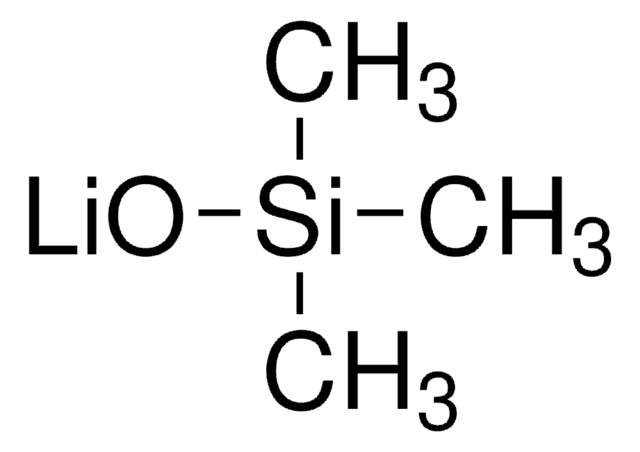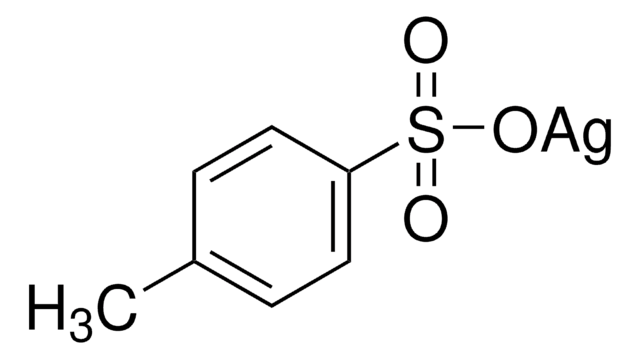566284
Copper(I) oxide
≥99.99% trace metals basis, anhydrous
Synonym(s):
Cuprous oxide
Sign Into View Organizational & Contract Pricing
All Photos(1)
About This Item
Linear Formula:
Cu2O
CAS Number:
Molecular Weight:
143.09
EC Number:
MDL number:
UNSPSC Code:
12352302
PubChem Substance ID:
NACRES:
NA.21
Assay:
≥99.99% trace metals basis
grade:
anhydrous
form:
powder
Recommended Products
grade
anhydrous
Quality Level
Assay
≥99.99% trace metals basis
form
powder
density
6 g/mL at 25 °C (lit.)
SMILES string
[Cu]O[Cu]
InChI
1S/2Cu.O
InChI key
BERDEBHAJNAUOM-UHFFFAOYSA-N
Looking for similar products? Visit Product Comparison Guide
General description
Copper(I) oxide is a weak inorganic base that can be used to activate halides for nucleophilic substitution reaction. It is also used in decarboxylation and cyclo condensation reactions.
Application
Copper(I) oxide can be used:
- As a precursor to prepare nanoparticles, nanocrystals, and quantum dots for various applications.
- To catalyze the N-arylation of azoles under aqueous conditions using phase-transfer catalyst.
- To prepare reduced graphene oxide-based nano copper composites applicable as a sensor for the detection of dopamine.
- As a copper precursor to prepare Cu2O-TiO2 nanoparticle-based composite materials with aluminosilicate geopolymers applicable in the removal of organic pollutants from water.
accessory
Product No.
Description
Pricing
Signal Word
Danger
Hazard Statements
Precautionary Statements
Hazard Classifications
Acute Tox. 4 Inhalation - Acute Tox. 4 Oral - Aquatic Acute 1 - Aquatic Chronic 1 - Eye Dam. 1
Storage Class Code
11 - Combustible Solids
WGK
WGK 3
Flash Point(F)
Not applicable
Flash Point(C)
Not applicable
Personal Protective Equipment
dust mask type N95 (US), Eyeshields, Gloves
Choose from one of the most recent versions:
Already Own This Product?
Find documentation for the products that you have recently purchased in the Document Library.
Customers Also Viewed
Copper(I) oxide
e-EROS Encyclopedia of Reagents for Organic Synthesis. (2009)
Investigation of copper (I) oxide quantum dots by near-edge X-ray absorption fine structure spectroscopy
Nachimuthu P, et al.
Chemistry of Materials, 15(20), 3939-3946 (2003)
Jay Singh et al.
The journal of physical chemistry. B, 117(1), 141-152 (2012-12-29)
The ultrafine monodispersed cuprous oxide (Ufm-Cu(2)O) nanoparticles have been successfully synthesized by a facile wet chemical method using poly-N-vinylpyrrolidone (PVP) as a capping agent. This colloidal solution of Ufm-Cu(2)O and chitosan (CS) is electrophoretically deposited (EPD) onto the indium tin-oxide
E Rezabal et al.
Physical chemistry chemical physics : PCCP, 15(4), 1148-1153 (2012-12-12)
The activation of methane and its subsequent conversion into more valuable feedstocks under ambient conditions are regarded as one of the major challenges in contemporary catalysis, due to its thermodynamically strong and kinetically inert C-H bond. Several enzymes and synthetic
Miguel A Vargas-Reus et al.
International journal of antimicrobial agents, 40(2), 135-139 (2012-06-26)
Dental plaque accumulation may result in peri-implantitis, an inflammatory process causing loss of supporting bone that may lead to dental implant failure. The antimicrobial activities of six metal and metal oxide nanoparticles and two of their composites against bacterial pathogens
Articles
Nanostructured Materials Through Ultrasonic Spray Pyrolysis
Our team of scientists has experience in all areas of research including Life Science, Material Science, Chemical Synthesis, Chromatography, Analytical and many others.
Contact Technical Service









